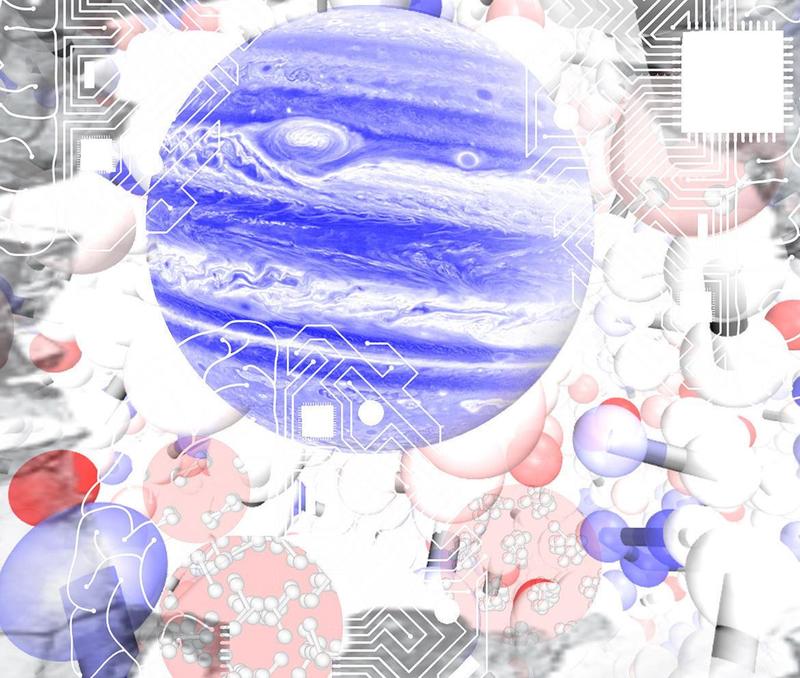Research Highlights
Revealing how hydrogen becomes a metal under high pressure
AI shows how hydrogen becomes a metal inside giant planets.

Hydrogen is both the simplest and the most abundant element in the Universe. It is the dominant component of the interior of the giant planets (e.g. Jupiter, Saturn) in our solar system as well as exoplanets. Deep inside giant planets, the pressure exceeds millions of standard atmospheres, under which hydrogen undergoes a phase transition: the covalent bonds inside hydrogen molecules break, and the gas becomes a metal. The existence of metallic hydrogen was theorized a century ago, but it is controversial how this process occurs, due to the difficulties in recreating the extreme pressure conditions in a laboratory setting, and the enormous computational cost of predicting the behaviour of large hydrogen systems. A recent theoretical study of the phase diagram of dense hydrogen employed machine learning to mimic the interactions between hydrogen atoms, in order to overcome limitations of direct quantum mechanical calculations. Researchers reached a surprising conclusion and found evidence for a continuous molecular to atomic transition in the dense hydrogen fluid, instead of a first-order one. The transition is smooth because the associated critical point is hidden under the melting line of hydrogen. Furthermore, this hidden critical point also induces other unusual phenomena, including density and heat capacity maxima. The finding about the continuous transition provides a new way of interpreting the contradicting body of experiments on dense hydrogen. It also implies a smooth transition between insulating and metallic layers in giant gas planets. The study would not be possible without combining machine learning, quantum mechanics, and statistical mechanics. The same approach will be used to uncover more physical insights about hydrogen systems in the future.
Cheng, B., Mazzola, G., Pickard, C.J. et al. Evidence for supercritical behaviour of high-pressure liquid hydrogen. Nature 585, 217–220 (2020).
See also the Cambridge Research and Economist features.